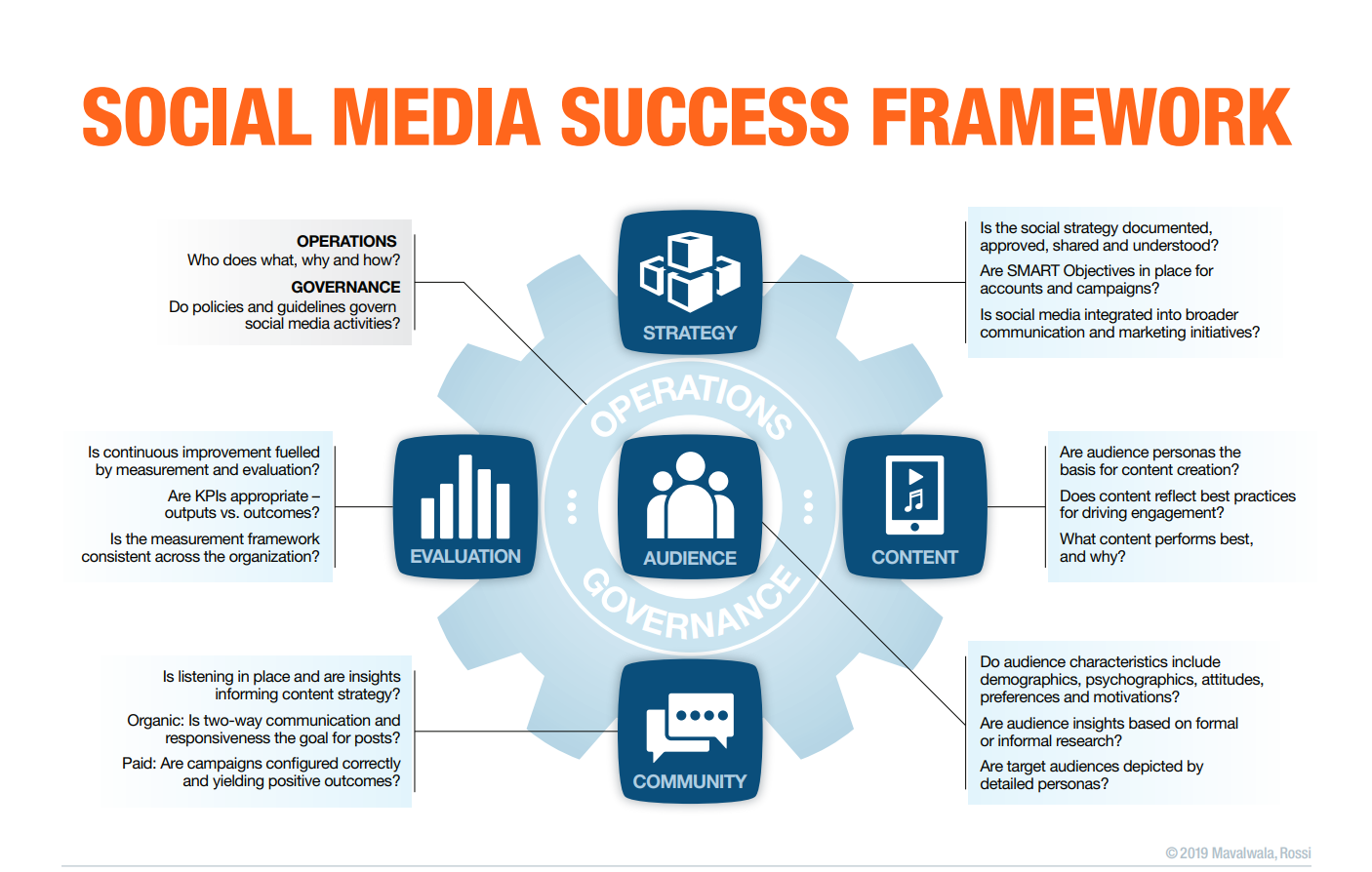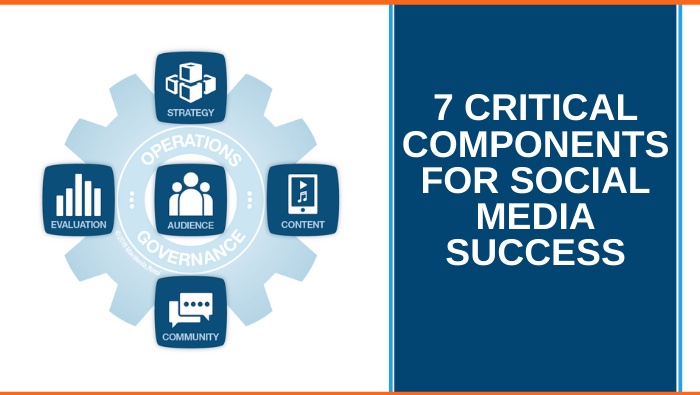If your organization has social media channels, I’ve got some good news, and unfortunately, I’ve got some bad news too.
Let’s get the bad news out of the way first.
Before opening up your first social media channel, I’m sure your team went to great lengths to ensure that the strategy was on point, the right audience was targeted and operations were efficient. And that’s how it should be.
Unfortunately, what we often find is that if one or more years have passed, what you planned to do, and what your team is actually doing, may be out of sync. Upfront planning is great, but organizational priorities evolve as leadership changes, staff turns over, priorities shift and acquisitions take place. Without evaluating how current social media tactics are supporting departmental and organizational objectives, you may find that what was once the correct course of action, may now be a misuse of time and resources.
In today’s world where staff are stretched and budgets are lean, it’s imperative to ensure your team is maximizing their efforts and minimizing corporate risk. So, if you haven’t already, set aside a block of time to roll-up your sleeves and conduct an in-depth social media audit, or engage an evidence-based organization with a proven process to do it for you.
The team at Advantis has been focused on providing social media audit services for almost a decade. From local and federal governments to regulatory colleges to member-based associations and private and public corporations, we’ve seen it all. The Social Media Success Framework that our seasoned team has developed is based on real-world situations we’ve encountered first hand. It’s the outcome of years of in-the-trenches experience and proven solutions that breed success versus hypothetical situations or a one-off success story.

And you’ll be pleased to know that even if you make just small improvements using the seven components of the Social Media Success Framework, you have the potential to significantly increase your social media ROI while dramatically mitigating risk. That’s the ideal scenario that savvy communication and marketing professionals strive to achieve. In fact, our team uses the Social Media Framework for Success to guide all our social media audits – it answers the question “how do you do a social media audit”.
If you want to dive into the Social Media Framework for Success keep reading.
Let’s start at the beginning – the audience.
During social media audits, we often find that target audiences are not well defined. You likely don’t have an infinite budget or an endless social media team, but clearly articulating your target audience is essential. When defining your target audience ask yourself these three questions:
• Are your target audience insights based on formal or informal research? (Hint: ideally use both)
• Do audience characteristics include demographics, psychographics, attitudes, preferences and motivations?
• Is your team guided by detailed and accurate audience personas?
It’s a lot of heavy lifting to do all of the above, but it’s certainly doable. Even just focusing on answering just one of the audience questions above will help define your audience and elevate your game.
Now let’s look at Strategy.
We often hear communication and marketing professionals say that social media is free. I like to say that in reality, it’s “free like a free puppy.” You still need to feed it, maintain it and more. Moving forwards strategically will save you time and resources while increasing the benefit to your organization. It’s a win-win-win scenario.
Key questions to ask yourself and your team include:
• Is the social strategy documented, approved, shared and understood by everyone involved?
• Are SMART Objectives in place for accounts and campaigns?
• Is social media integrated into broader communication and marketing initiatives?
If you just wanted to start off by choosing one of these to tackle, I’d recommend starting with S.M.A.R.T. objectives. Are your objectives Specific, Measurable, Achievable, Relevant and Time-bound? It’s an important exercise to conduct a SMART Objectives workshop with your team. This one training session alone will pay huge dividends.
Once you have a strategic direction, you need rocket fuel ̶ the ability to create compelling content on a consistent basis.
Content
A key rule for creating compelling content is to ensure your content provides value for the target audience. The kind of value that nourishes them, that makes them want to share with their friends and that keeps them returning for more. Sadly, this one rule is often broken and a lack of time to develop better content is cited as the reason why.
If you’re not hitting your engagement results or your content doesn’t excite your audience, think about these three questions:
• Are audience personas the basis for content creation?
• Does content reflect best practices for driving engagement?
• What content performs best and why?
Once we’ve nailed the content creation we then need to focus on its distribution, but that’s really only half the equation – the push. We also need to think about two-way communication – the social conversation and building engagement with the community.
Community
Building community is really where the magic happens. Although two-way conversations take more effort than simply pushing out content, engagement and interaction are important pillars of social media success. And the first step to creating solid conversations is listening. We train teams on how to listen and transform the insights into actions so they can better understand their target audience and create content that will resonate.
But sadly, creating and organically sharing content is a strategy of past. Regardless of the industry or topic, social media success today must include an element of paid. Although strategic advertising is critical for success, it does need to be executed correctly. Social media advertising has become sophisticated so unfortunately there’s no easy button. Do yourself a favour and save your budget by not using the “promote” or “boost” button every time. One button can’t transform a complex process into a simple task. Take the time to learn or hire out to increase your ROI with social media advertising. Three questions for your consideration related to community are:
• Is listening in place and are insights informing content strategy?
• Organic: Is two-way communication and responsiveness the goal for posts?
• Paid: Are campaigns configured correctly and yielding positive outcomes?
Evaluation
And of course, there’s evaluation. This is where we tie back our results to our stated business and communication objectives. We often find that staff don’t measure the right indicators or are too busy to finish this important stage. That’s why the Advantis team also developed the Advantis Social Media Measurement Model. Regarding evaluation, here are three questions to ask your team:
• Is continuous improvement fuelled by measurement and evaluation?
• Are KPIs appropriate – outputs vs. outcomes?
• Is the measurement framework consistent across the organization?
And just when we thought we were finished, there are two areas to address to ensure consistency.
Operations & Governance
You need to review your operations and governance to ensure your team is effective while also minimizing organizational risk. Two questions to consider here are:
• Who does what, why and how?
• Do policies and guidelines govern social media activities?
So there you have it, with this Social Media Success Framework you’re ready to start adding value to your organization through strategic social media. To ensure it’s not overwhelming, just start with one area and go from there. One small win at a time.
If you don’t have large blocks of free time to do this, feel free to give us a call and find out what would be included in an Advantis social media audit for your organization. Call us to book a free 30-minute call to understand how Advantis’ deep social media audit expertise would benefit you: 416-848-1885.
Advantis Social Media Success Framework
Download this quick guide for future reference

 connecting
connecting



